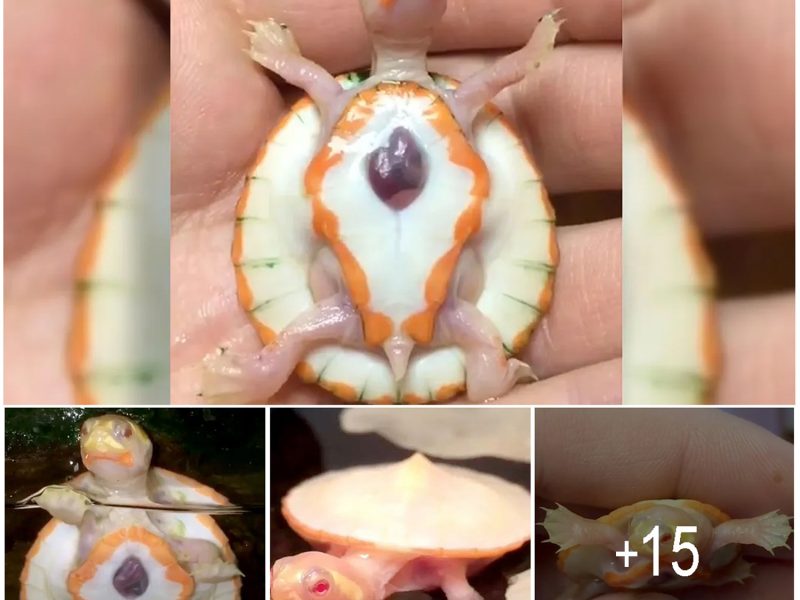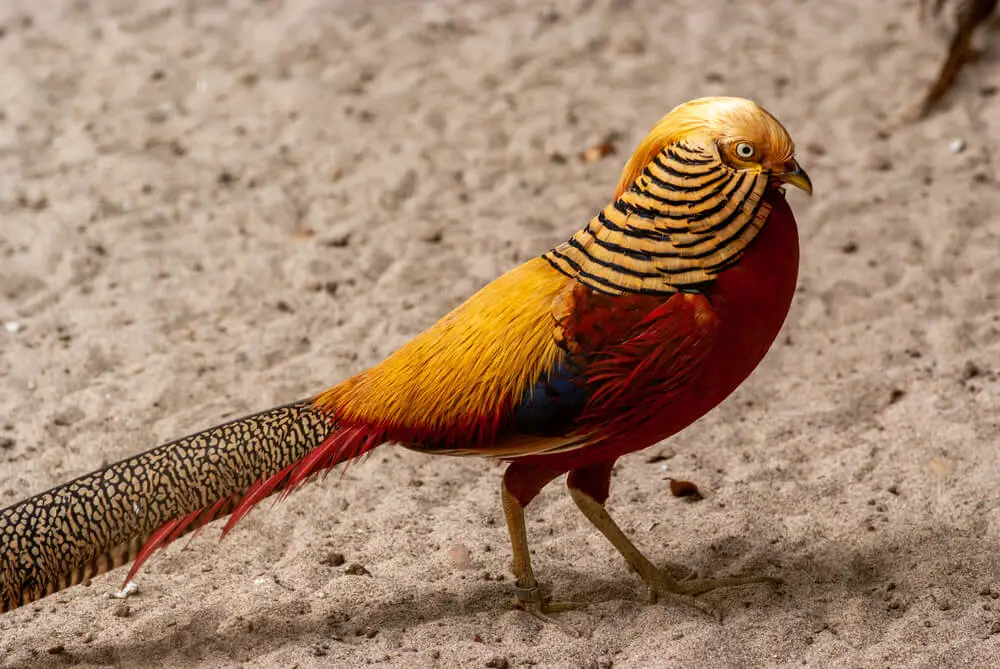
Birds come in a variety of types and colors, and the same is true about their beaks. These can vary in hue from black to whitish, but the most common are carotenoid pigment – red, yellow, or orange in color.
Due to various pigment concentrations, orange beaks occur more frequently than yellow or red. If you’re wondering which birds with orange beaks you can spot in the wild, check out the gorgeous species below:
1. Australian Zebra Finch
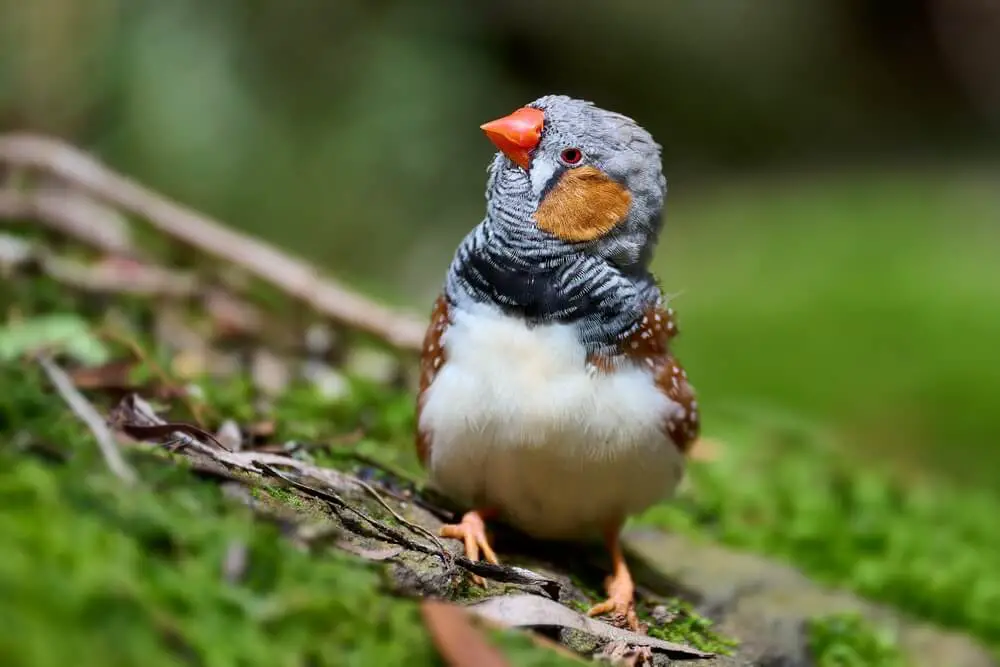
Scientific name: Taeniopygia guttata castanotis
One of the many finch species and the most popular kept as a pet, the Australian zebra finch is one of the most common birds with orange beaks worldwide.
This small songbird grows up to four inches in length and is native to Australia, where it can be seen in the wild. Zebra finches exist as an introduced species in most parts of the world, where it is bred in captivity.
2. Tufted Puffin
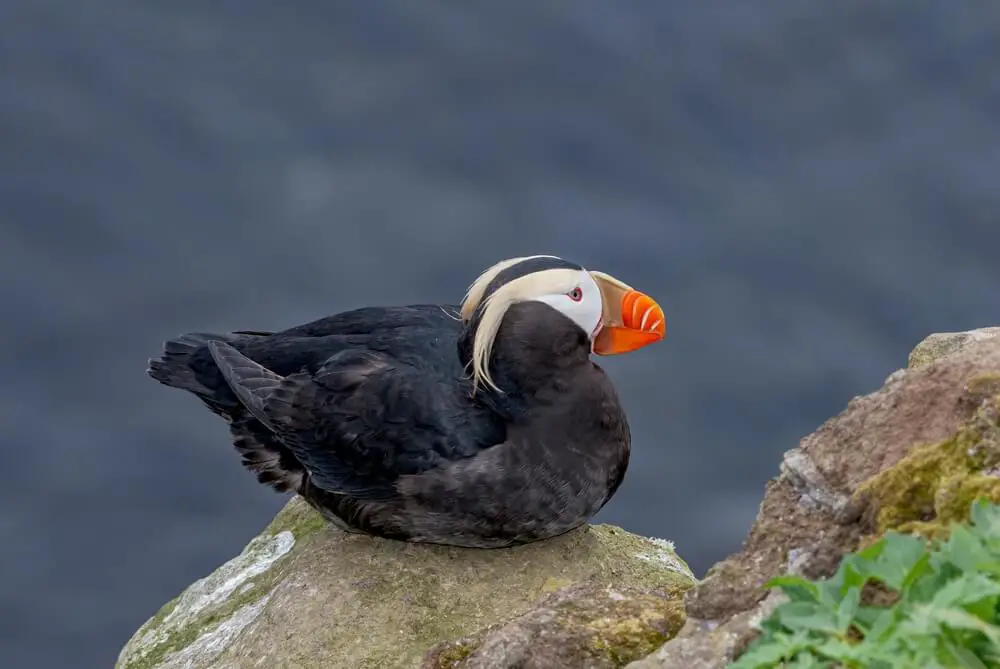
Scientific name: Fratercula cirrhata
Historically one of the marine birds with orange beaks in Washington, the tufted puffin is a brownish-black bird with a white face, orange bill, and pale yellow tufts behind each eye – a trait that earns them the name.
Typically found in marine intertidal areas along rocky coasts, these birds can be admired in the northern USA and Canada, eastern Russia, Japan, and the Korean peninsula.
3. Orange-Billed Sparrow
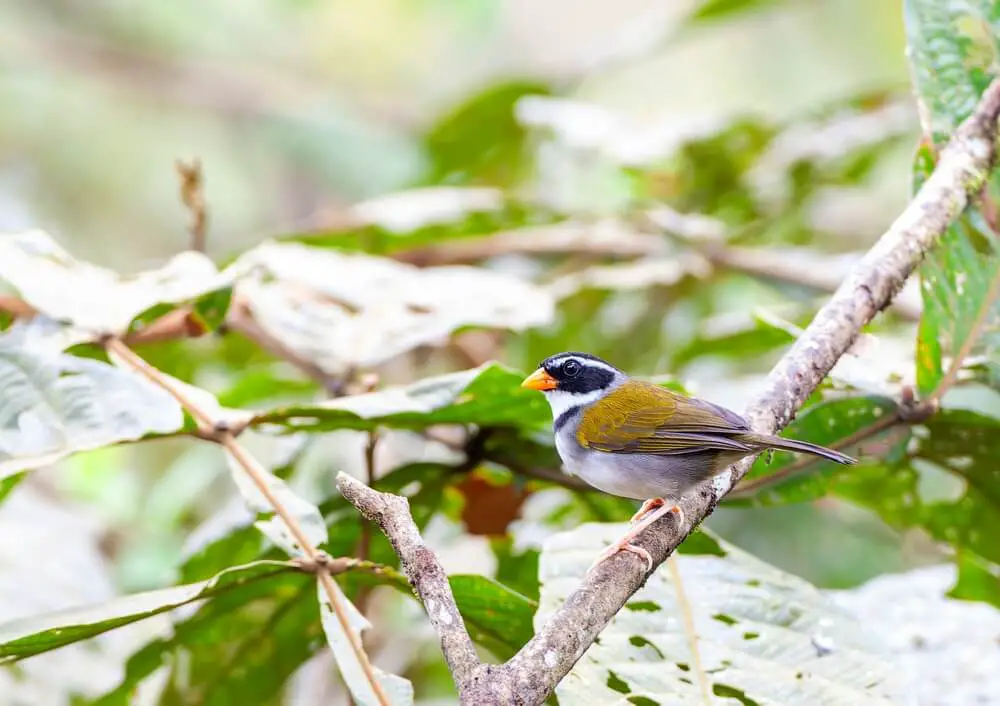
Scientific name: Arremon aurantiirostris
One of the most boldly patterned small birds with orange beaks, this sparrow inhabits humid evergreen forests in tropical lowlands.
Its range spans Central South America, Colombia, Ecuador, and parts of Peru. The bird has a white and black head, orange beak, and a black collar under the white chin. The rest of the plumage is olive on the back and wings and grey on the undersides.
4. American Oystercatcher
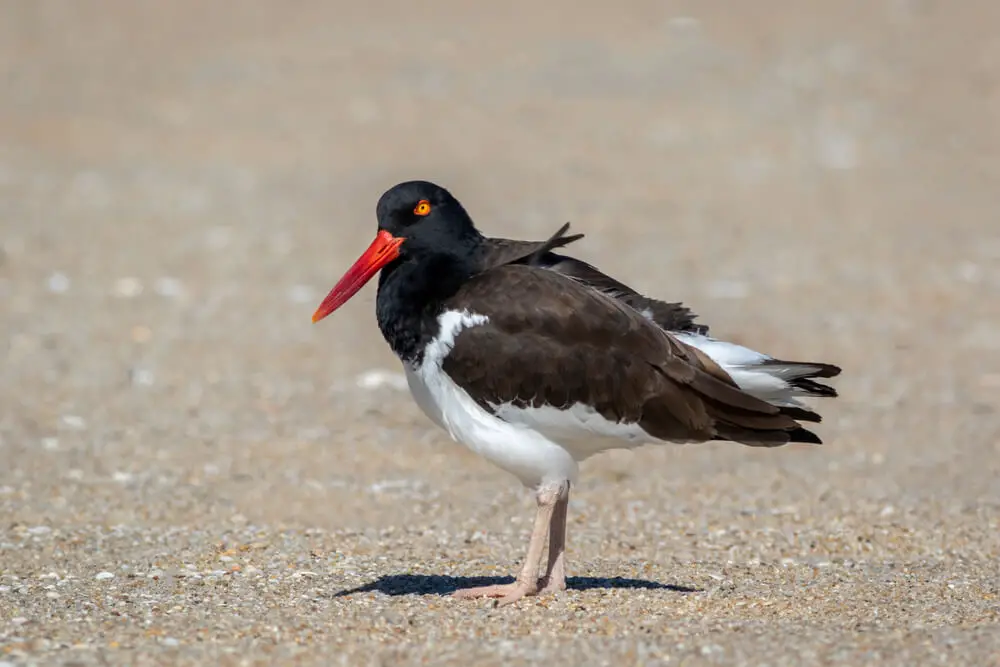
Scientific name: Haematopus palliatus
The American oystercatcher is one of the shore birds with orange beaks found on the Atlantic and Gulf Coast beaches. Typically solitary, it is sometimes found in groups during summer.
Like most shorebirds, it has a larger, bulky body with relatively long legs. The beak is also long, aiding in catching fish. Color-wise, this oystercatcher has white and black plumage on the head and body, while the legs are pale pink or white.
5. White Ibis
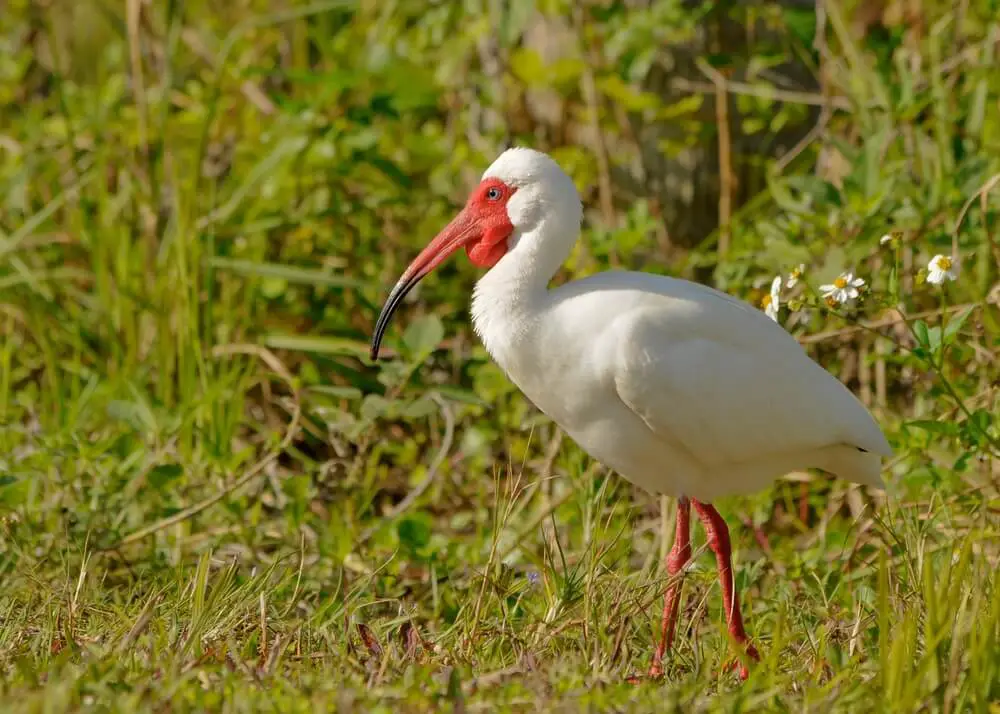
Scientific name: Eudocimus albus
Another American species common in coastal areas is the white ibis. Similar to the American oystercatcher, this bird with orange beak in Virginia lives along the Gulf Coast, its range expanding into the tropical New World.
Its looks are similar to a stork, but the beak is longer and dark orange. Adults have true white plumage, except for a row of black feathers on the inner side of the wings, and that are only visible during flight.
6. Northern Cardinal
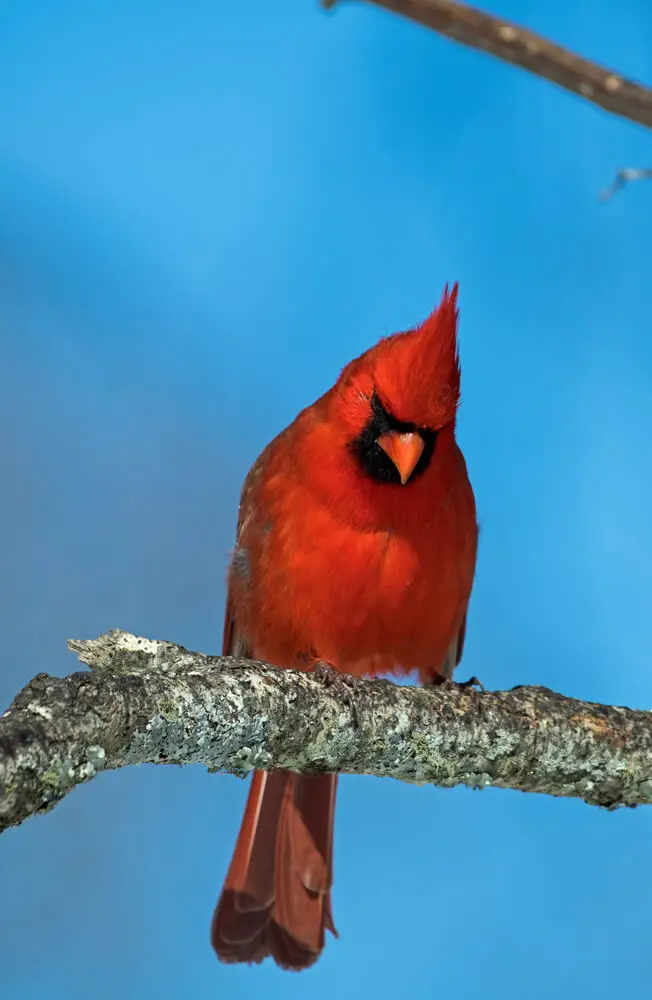
Scientific name: Cardinalis cardinalis
An orange bird with an orange beak, the northern cardinal, is one of the most common and widespread species of passerine birds in North America.
So common that it is the official bird of seven eastern US states, including North Carolina, Illinois, Kentucky, and West Virginia.
Males typically sport some bright red plumage mixed with hot orange. They have sturdy orange beaks and crests. Females are duller, but they also have orange bills and are orange all over.
7. Violet Turaco
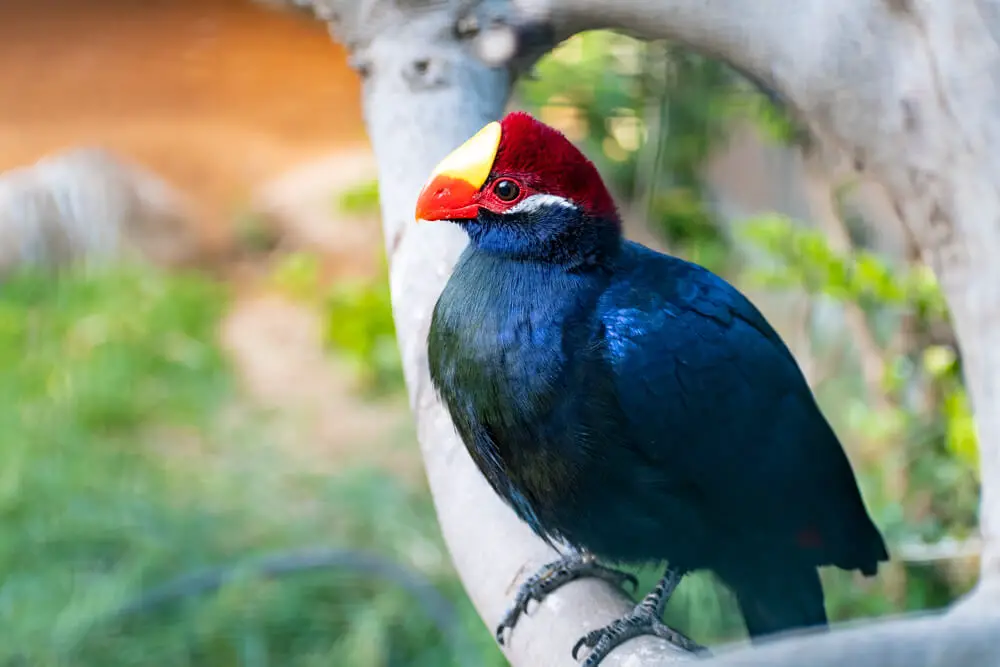
Scientific name: Musophaga violacea
This magnificent purple-blue bird with orange beak is remarkable for its bold assortment of colors. Its plumage has an almost indigo hue that covers the bird entirely, except for the head.
The crown is red that fades to orange towards the bill. At the same time, the yellow forehead adds a splash of brightness.
The violet turaco is native to Africa, its natural habitat ranging from Cameroon to Gambia and Senegal.
8. Crested Auklet
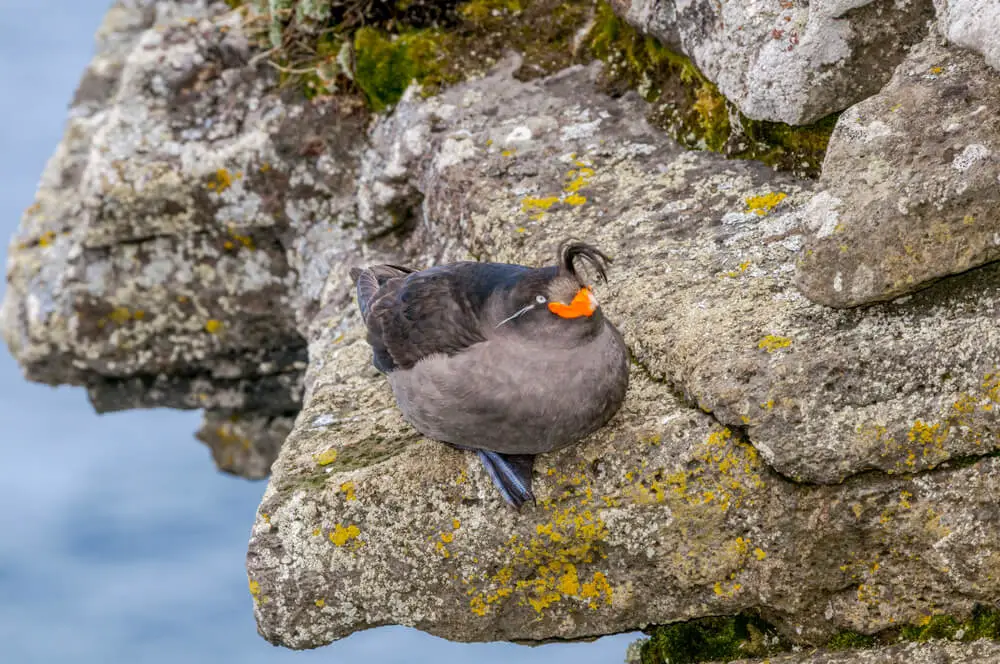
Scientific name: Aethia cristatella
A mostly gray bird with orange beak, the crested auklet is one of the most peculiar species on this list.
This shorebird species is distributed along the northern Pacific coastline but also in the Bering Sea area.
Crested auklets feed by diving into the cold waters and catching fish and crustaceans.
Their beaks are small compared to other waterfowl species, but the “smiling” beaks, nose tufts, and ice blue eyes give it a hilarious appearance.
9. Grey Heron
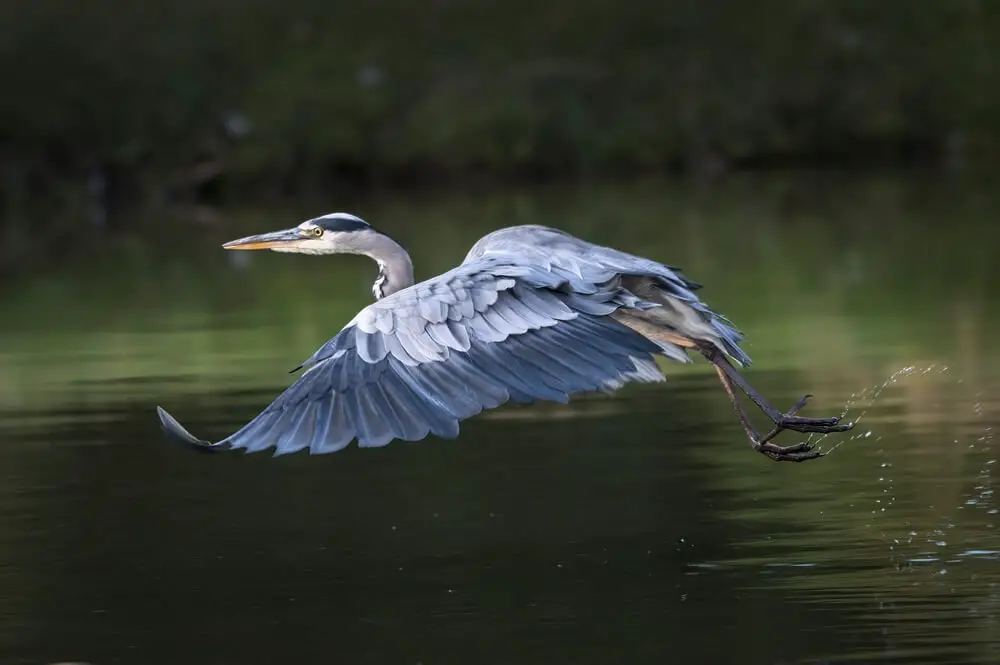
Scientific name: Ardea cinerea
Native to the Old World, the grey heron is one of the most common types of orange-beaked waterfowl in Europe and Asia.
This species is easily recognized thanks to its gray back, white neck, and long legs and neck. The bill is also long, this bird using it to probe muddy waterbeds and sandy shores.
An interesting trait is that the beak is orange on top and yellow on the underside.
10. Royal Tern
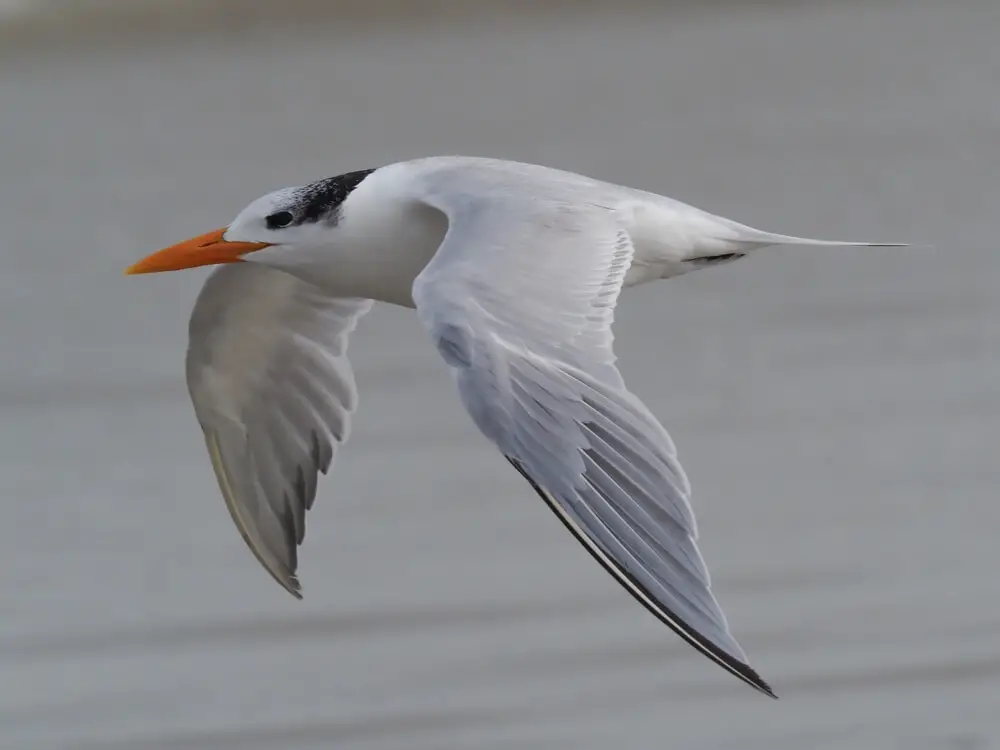
Scientific name: Thalasseus maximus
Gray and white as the heron but stockier and with short legs, the royal tern is a native bird with orange beak in South Dakota.
These birds have light gray bodies mixed with white and splashes of black. The characteristic trait is the black tuft above the eyes that can sometimes look like a crest.
Royal terns are about the same size as seagulls, but they have longer and darker orange beaks.
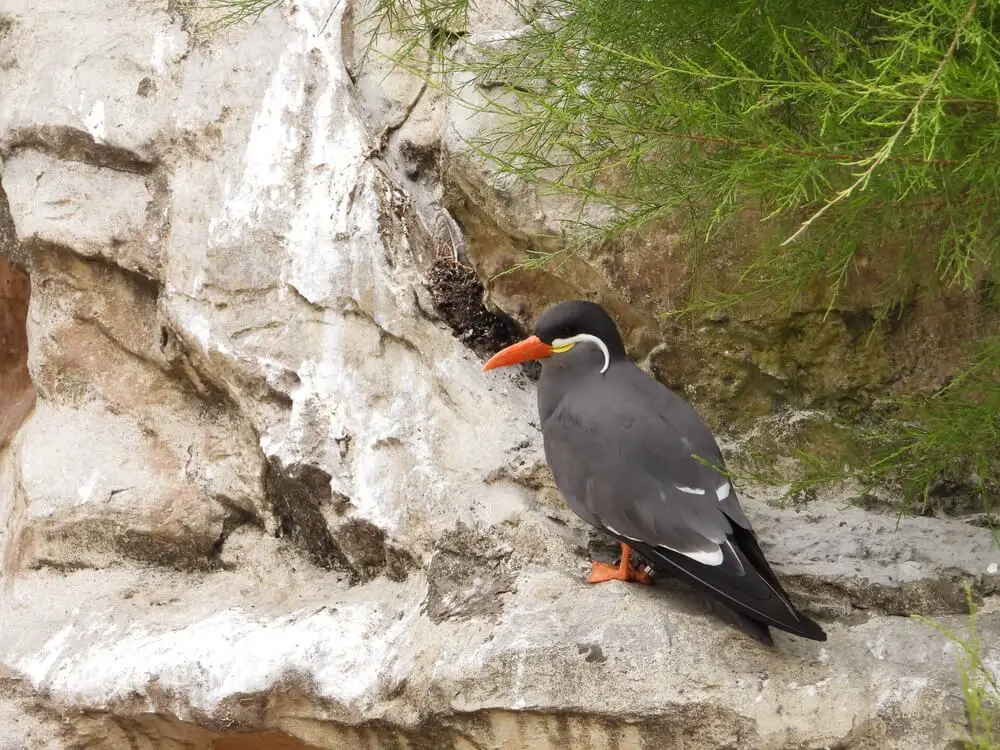
Scientific name: Larosterna inca
The inca tern is part of the same family as the royal tern, but these birds are found in South America.
They are smaller than royal terns, typically measuring up to 16 inches in length. Both sexes are similar, but males are more of a slate-gray.
Color aside, this species of bird with orange beak is famous for its fancy-looking white mustache.
12. Black-Bellied Whistling Duck
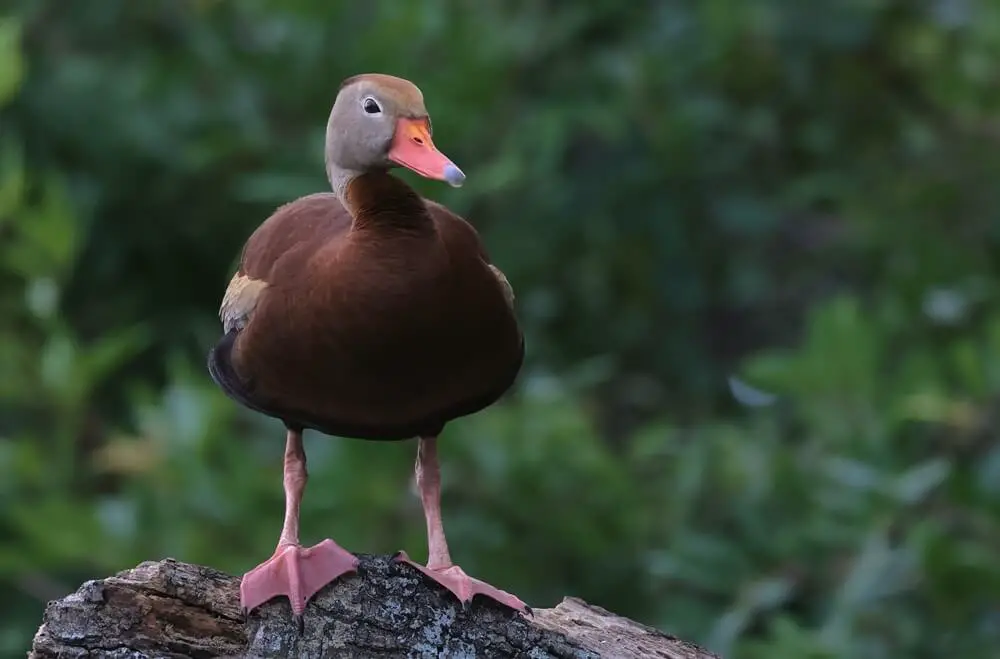
Scientific name: Dendrocygna autumnalis
One of the birds with orange beaks and legs in Texas, the black-bellied whistling duck is mostly known for its dark orange to red bill and for being the most erect of all ducks.
It occurs in damp, lowland habitats across south North America, Mexico, and Central America. The plumage is brown with a black plate on the chest, while the bill is orange-red and often yellowish at the base.
While this duck lives near water sources, it often flocks to harvested fields or overgrown pastures to feed on grass or waste grain.
13. Red-Breasted Merganser
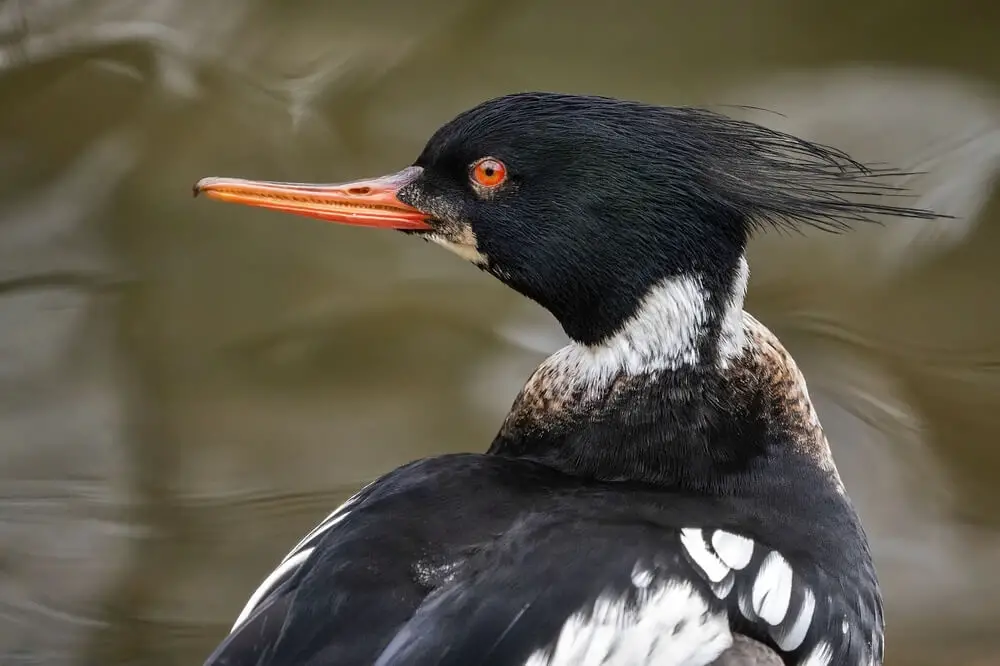
Scientific name: Mergus serrator
From one duck type to the next, the red-breasted merganser is a diving duck that often nests near freshwater lakes and rivers in Europe, Greenland, and North America.
One of the most common water birds with orange beaks in coastal California, this migratory duck feeds mostly on fish.
In California, it is a common resident in the winter months, but it migrates further north to Canada for breeding.
14. Wattled Curassow
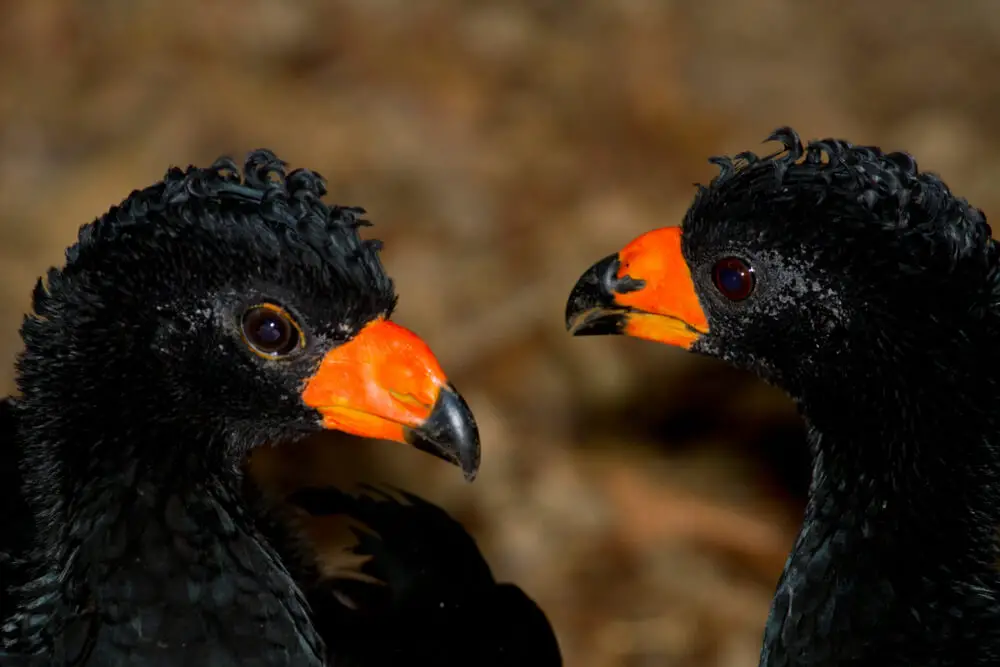
Scientific name: Crax globulosa
A threatened member of the Cracidae family, this black bird with orange beak is typically found in the remote rainforests of South America – usually in the Amazon basin.
It is very large in size, often exceeding 35 inches in length. The beak is actually black – the same as the plumage – but the bright orange cere surrounding it makes it look orange at first glance. The legs are also orange.
15. Cattle Egret
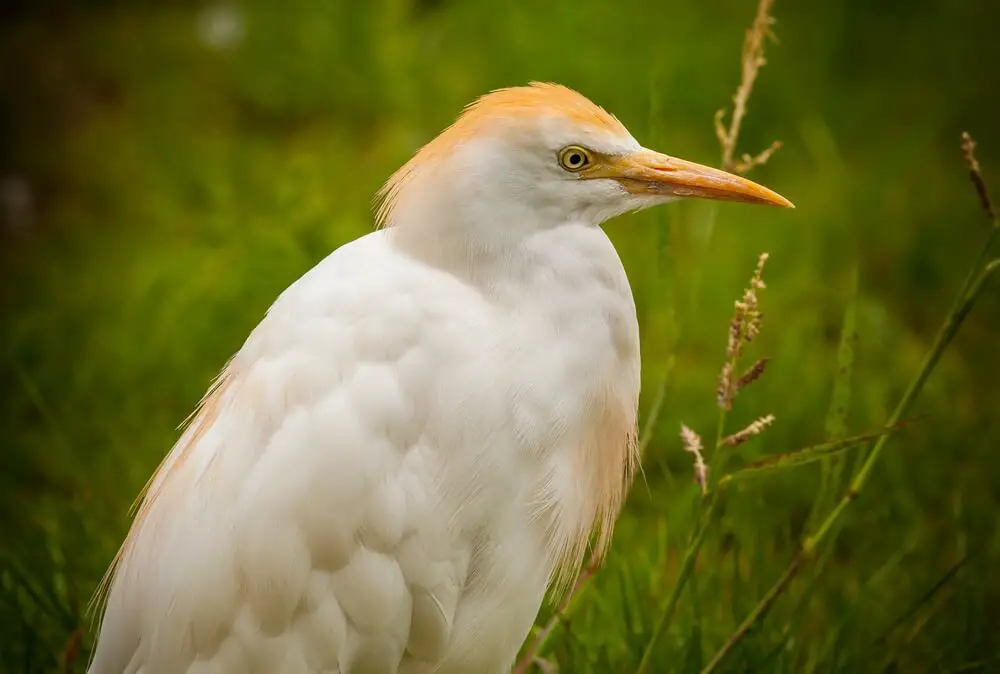
Scientific name: Bubulcus ibis
Owing their name to the habit of following around herds of cattle – and feeding on the insects that these herds disturb – the cattle egrets are common white birds with orange beaks around the world.
They are found in the Old and New World alike, their range spreading from Europe to the Americas, Asia, and Australia.
These birds are relatively small, snowy-white, and have bright orange beaks and black legs.
